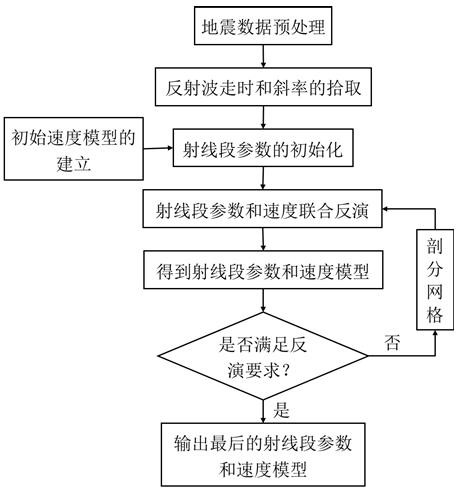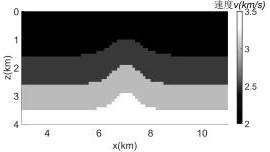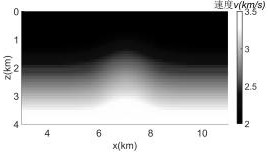Seismic slope tomography method based on depth weighting
A tomographic imaging and slope technology, applied in seismology, seismic signal processing, geophysical measurement, etc., can solve the problems of inability to establish accurate deep velocity field, low signal-to-noise ratio, and poor inversion velocity effect, and improve the speed Model quality, the effect of improving the modeling effect
- Summary
- Abstract
- Description
- Claims
- Application Information
AI Technical Summary
Problems solved by technology
Method used
Image
Examples
Embodiment 1
[0044] In the following, the theoretical model test of the present invention will be explained and described in conjunction with specific implementation methods.
[0045] In order to further illustrate the realization idea and implementation process of this method and prove the effectiveness of the method, a theoretical model is used to test and compare with the results of the non-depth-weighted seismic slope tomography method.
[0046] S1: Use the theoretical speed model as the real speed model. The true velocity model has a lateral width of 14km and a depth of 4km. A square unit grid is used for discretization, the grid size is 50m, see figure 2 , for the convenience of comparison, the theoretical velocity model is smoothed, see image 3 .
[0047] S2: Observation system: evenly distribute the scattering points on each velocity interface, from each scattering point to The directions of 10°, 20°, 30° and 35° are emitted towards the surface, and the ray is traced to the ...
PUM
 Login to View More
Login to View More Abstract
Description
Claims
Application Information
 Login to View More
Login to View More - R&D
- Intellectual Property
- Life Sciences
- Materials
- Tech Scout
- Unparalleled Data Quality
- Higher Quality Content
- 60% Fewer Hallucinations
Browse by: Latest US Patents, China's latest patents, Technical Efficacy Thesaurus, Application Domain, Technology Topic, Popular Technical Reports.
© 2025 PatSnap. All rights reserved.Legal|Privacy policy|Modern Slavery Act Transparency Statement|Sitemap|About US| Contact US: help@patsnap.com



